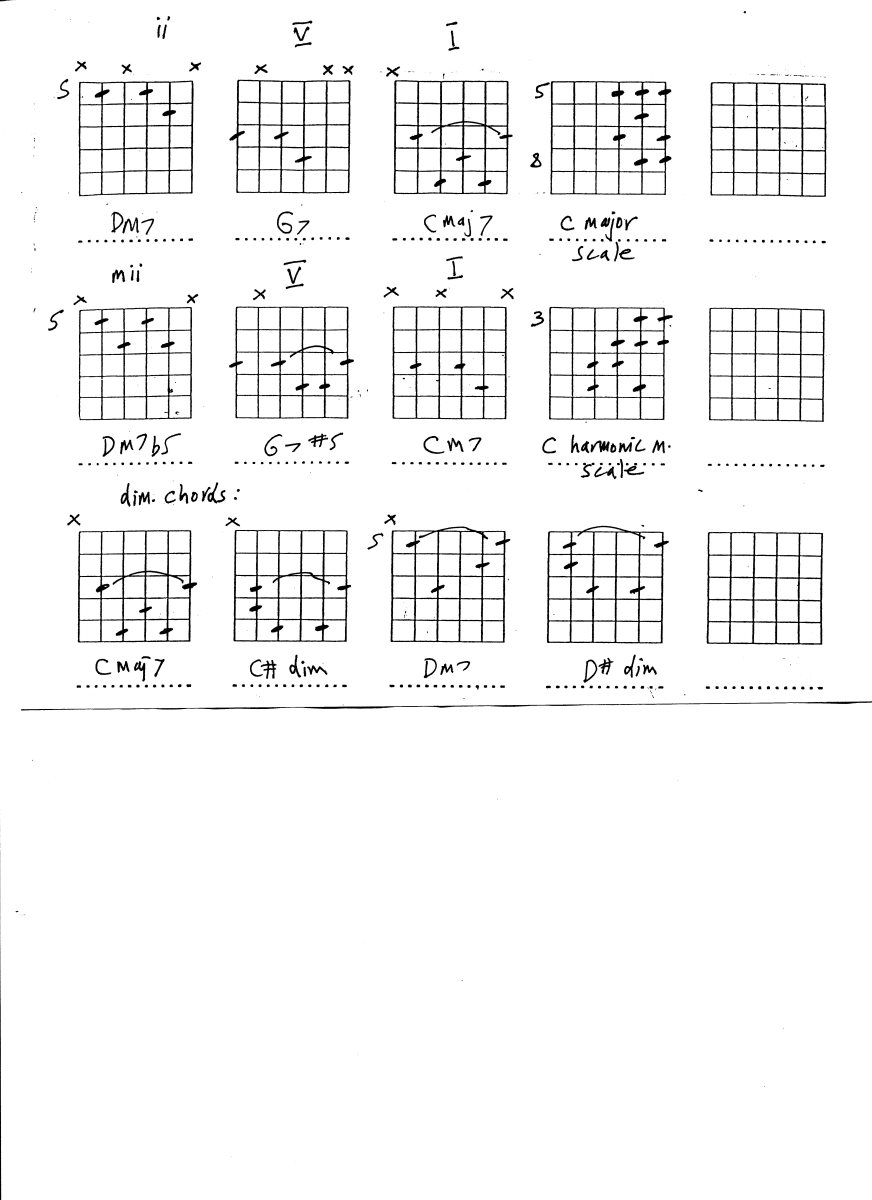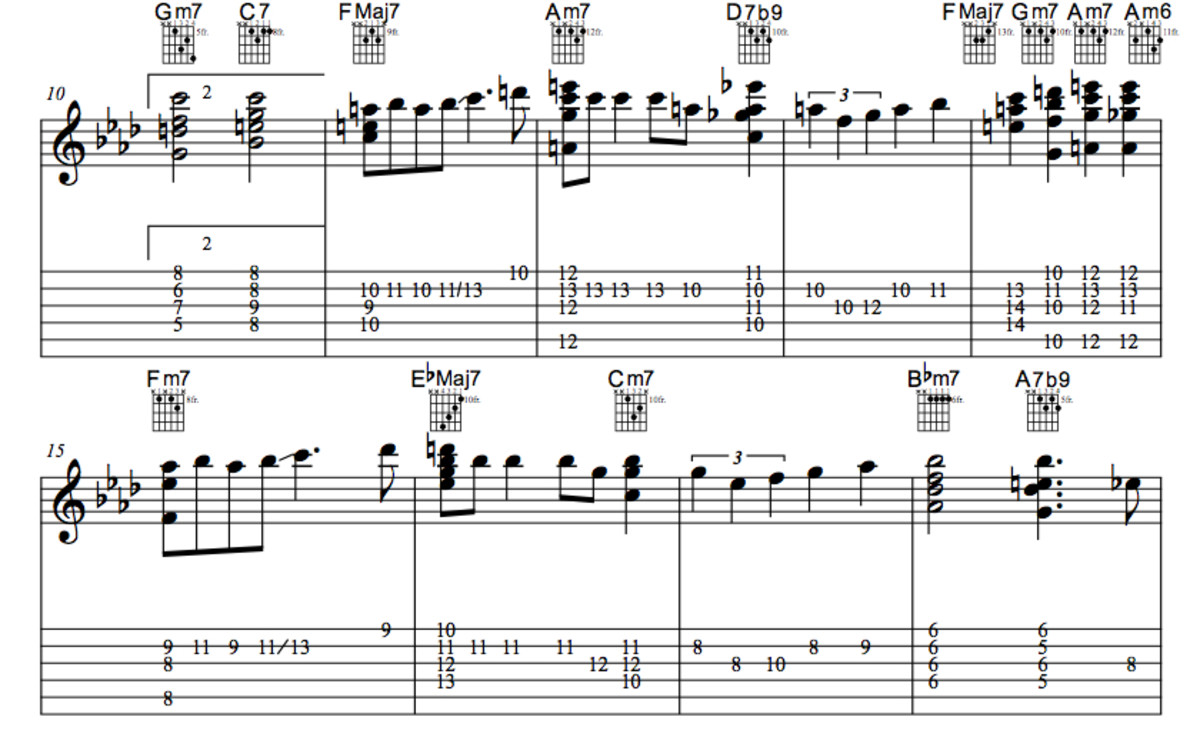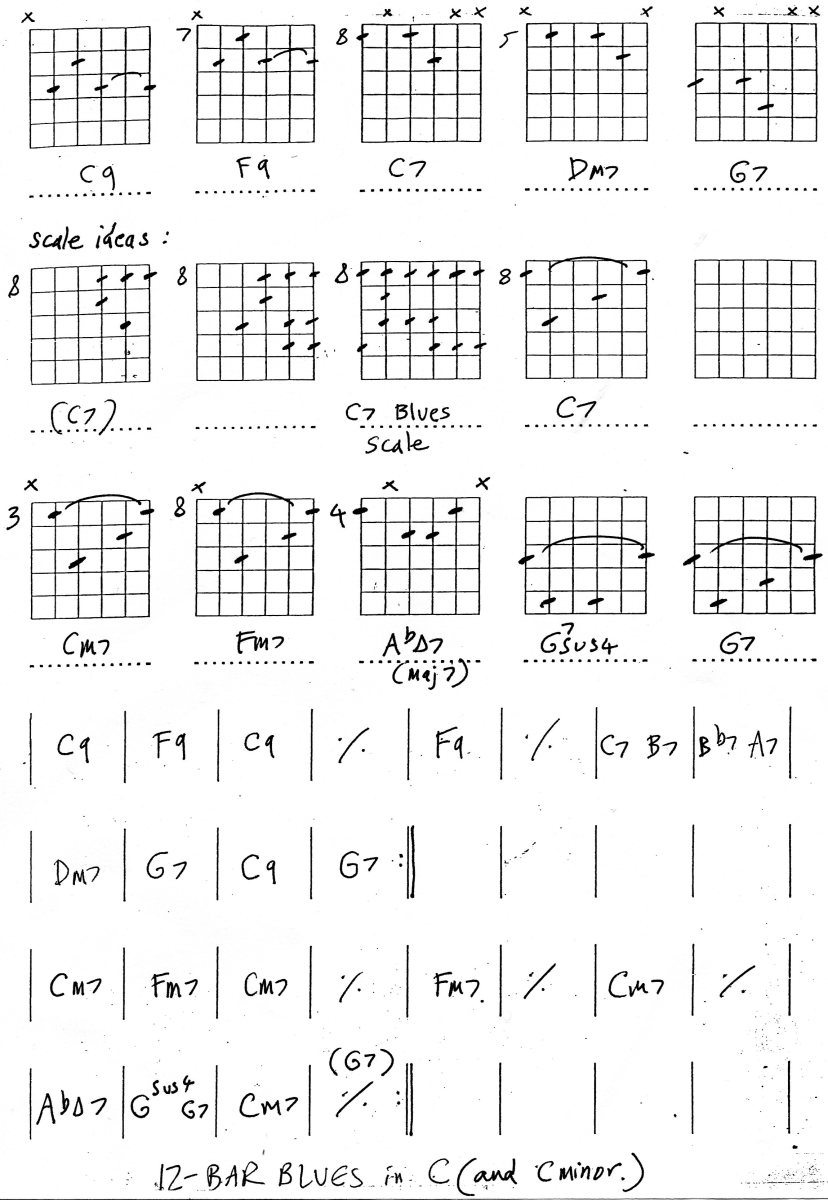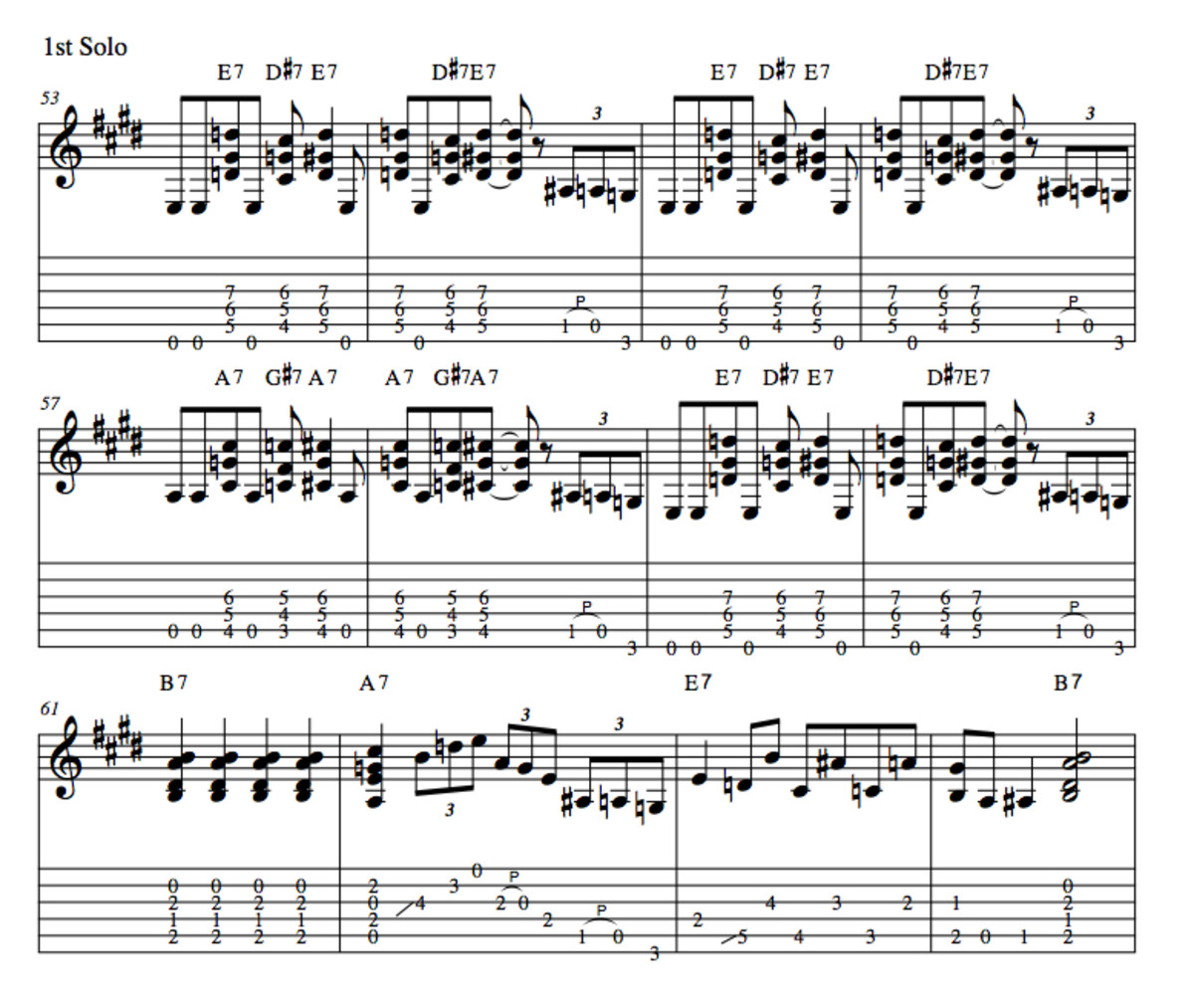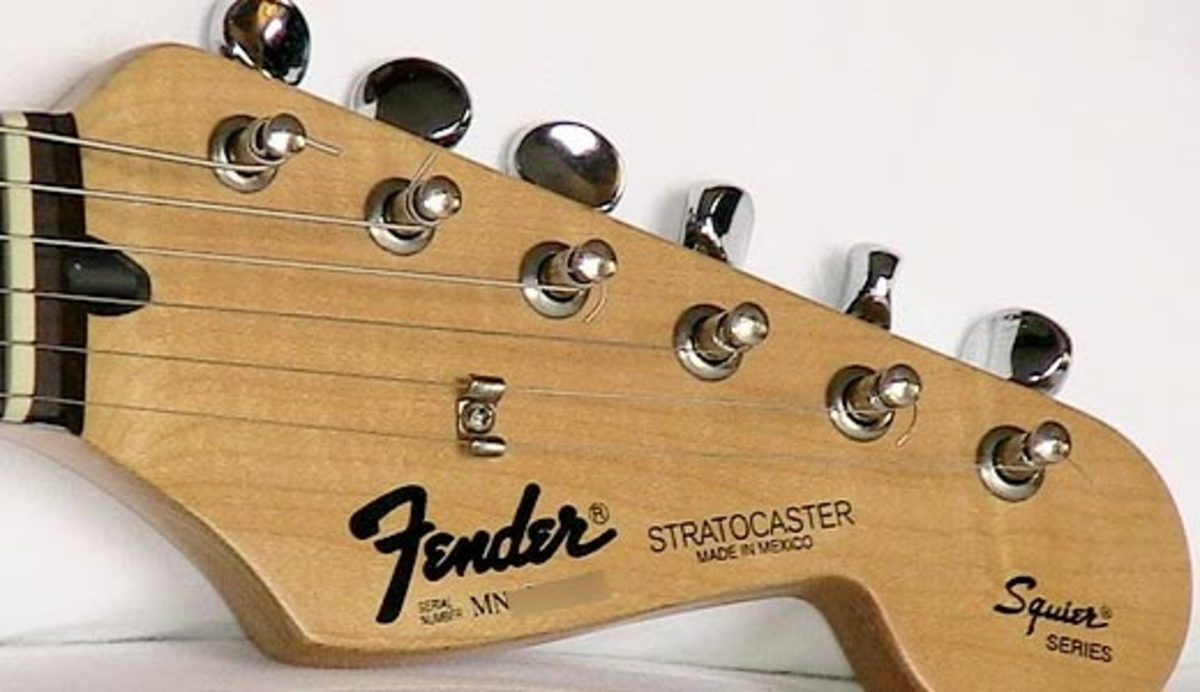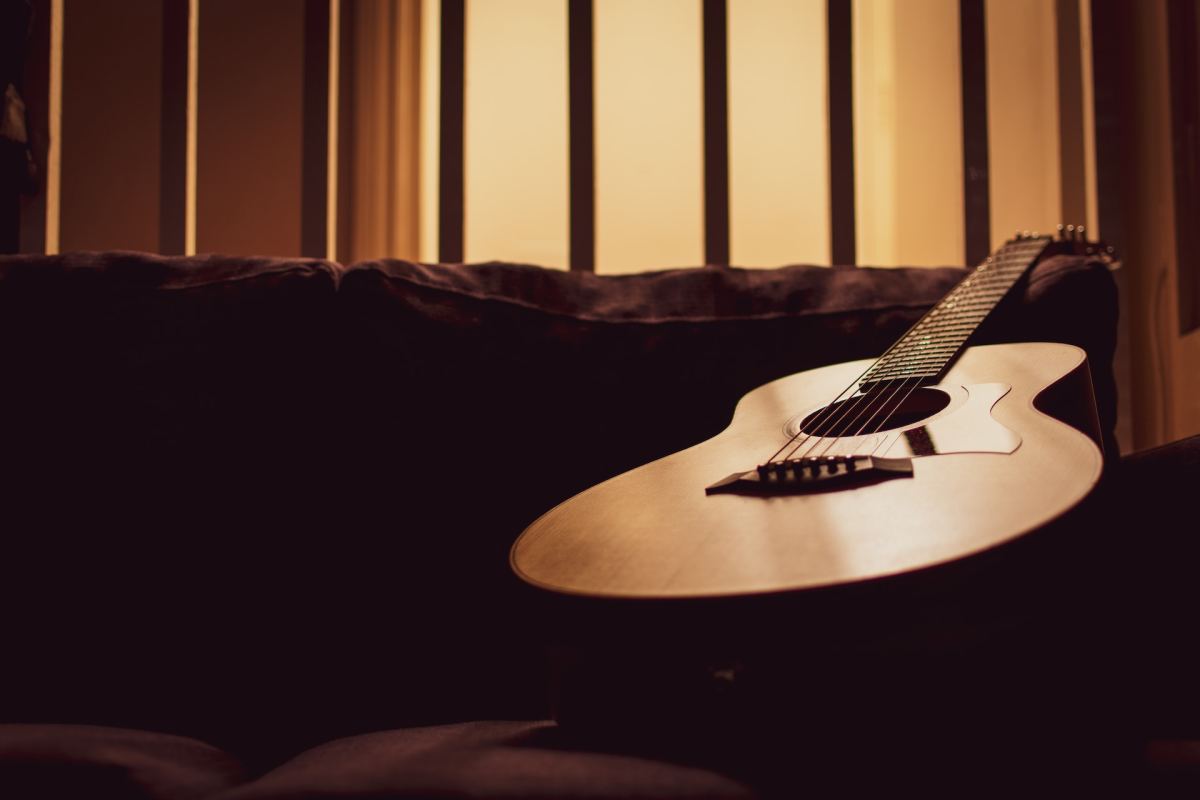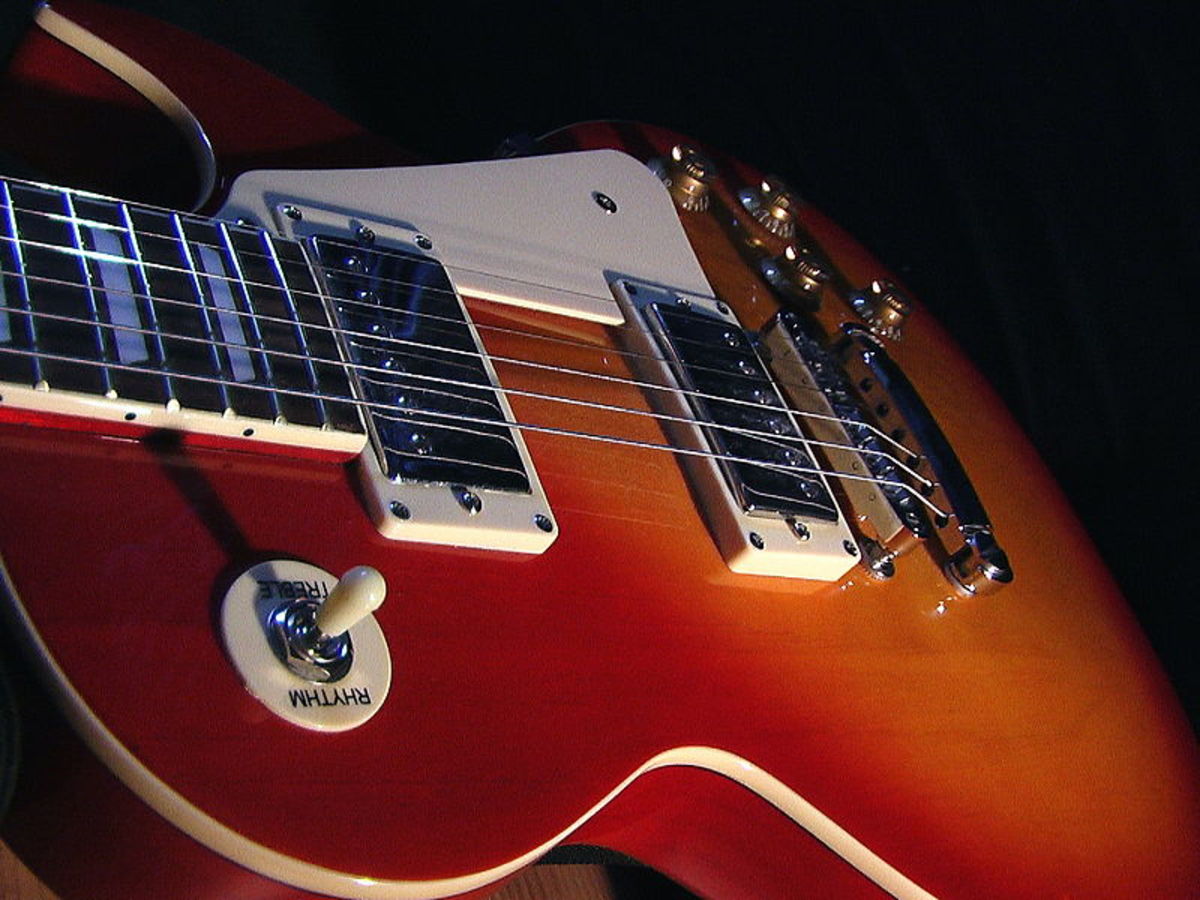Guitar Lesson, Playing Jazz Standards
Playing jazz standards
I've jotted down the chords for a well-known jazz tune, have been working on it day and night (!)
It's intended for private study purposes only. This will hopefully show how you can use the most common jazz chord types in practice. I've got other hubs such as Jazz Guitar Chords which may be helpful if you are new to some of the chords here.
Also, my new hub Play Jazz Guitar covers the basics of jazz guitar.
- First chord - Ab maj7 is a root 6th form of a major 7 chord - the one with the root note on string 6 (Ab) You could use Dm7b5 instead, it's worth trying both as they will give you slightly different harmony.
I think of this chord as an Am shape, with the thumb over the neck for the bass note - though there are many other ways to play this if it's not to your liking. String 5 is muted, which tends to happen anyway.
- Second chord is F/G. This is a substitution for a G7 chord, and usually leads back to the I chord, which is C maj7. If I'm stuck for an intro I'll often play C maj7 to F/G a few times, it will nearly always work well.
- Third chord is a Cmaj7. It's the tonic or home chord of the key of C. You could just stay on this chord, but an alternative is to play C maj9, which adds variety. Changing round the chord shape is a bit difficult at first.
Jazz Guitar chords
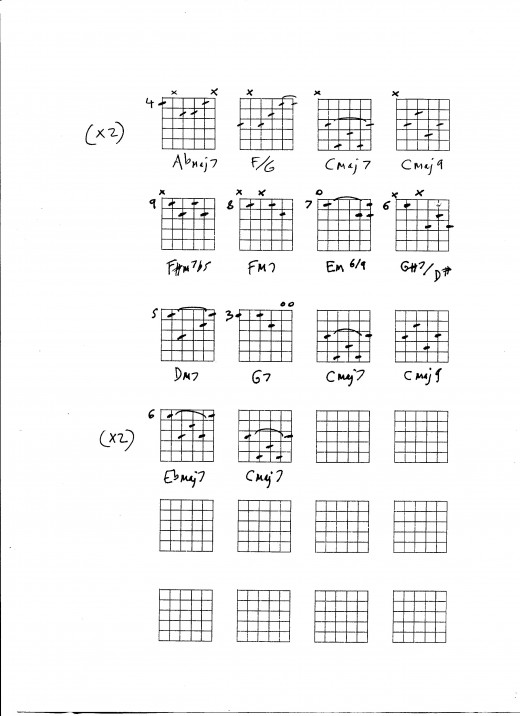
Reading Chord Grids
The 6 vertical lines are the strings, the horizontal lines are the frets. Barre is shown as a loop symbol.
Second line of jazz chords
- Here we have a descending bassline, or chromatic bass line, where the root note on string 5 goes down one fret at a time, hopefully sounding smooth and predictable. It is often accompanied by swearing however.
- The Fm7 chord could be played as a normal barre chord, but generally I'll replace those with a three-note chord like the one shown - as it's less tiring and usually sounds better. You can add vibrato or slide into this shape, just mute the middle string. It's typical of the great Freddie Green, one of the all-time greats of rhythm guitar.
- The Em chord could be played as Em7, but the chord shown is better.
- The G7 can be played with just the 3-note voicing, but the open strings make it more of a 13th chord. The preceding Dm7 chord could also be played with this voicing, but across one string, like the Fm7 we were just playing.
- Always look for the patterns. The Dm7 to G7 to C is a ii, V, I in the key of C. Exactly the same as hundreds of other jazz standard tunes, so you can apply the same material again and again, and also this will really help with memorising tunes.
- The last chords are root 5 chords - maj7 shapes with a barre that shift up and down the neck.
Solo tips
There are key changes throughout this progression, and it's essential to learn the chord changes or it will end in tears! I would favour a chord-tone or arpeggio approach rather than a modal approach, mainly to keep it simple - the melody line isn't too complicated, and following the Brazilian music approach - when there are lots of chords keep the melody line very simple, and vice versa. It's good to learn the original melody, or at least an approximate version.
Getting the sound
If you are playing jazz standards they will always sound best on an archtop guitar, usually with flatwound strings. I sometimes play standards on an acoustic guitar, and it never really sounds right. The ideal guitar would probably be a Gibson 175, but there are many more affordable archtops and I'm very impressed with the Ibanez archtops range. Another workable alternative is a Telecaster, try using 11 gauge strings and something with a humbucker or Charlie Christian pickup in the neck position. Great players who have used this include Ted Greene, Ed Bickert, Bill Frisell, Tim Lerch.

